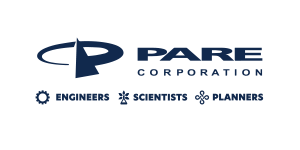Resource
Seismic Analysis and Post-Earthquake Inspections
This document provides general guidance for dam owners and engineers for the inspection of dams following an earthquake and for the evaluation of existing dams with regard to their performance during and after seismic shaking. An earthquake may cause failure of or severe damage to a dam and its appurtenant structures. In the-event of damage, immediate action may be necessary to prevent further weakening or catastrophic failure of the structure. Accordingly, all dam operators should be carefully instructed in the procedures to be followed if an earthquake should occur that produces motions of intensity sufficient to cause damage. To reduce the risk associated with such earthquakes, it is incumbent upon owners to assess the safety of their dams by means of a proper seismic response investigation. All dams should be capable of withstanding anticipated seismic motions without failure that may result in loss of life or extensive property damage.
Verification of the seismic adequacy of a particular dam structure requires consideration of all pertinent factors, including those that are not normally considered in standard methods of analysis, such as consequences of failure (generally determined from a breach analysis), operating practices and pool levels, age of the dam, availability and detail of design plans and subsequent alterations, adequacy of emergency action plans and experience of dam operator, among others.
The focus of these guidelines is on evaluation and inspection of existing earth embankment dams, which are the predominant type in Hawaii. Other types of jurisdictional dams, such as concrete-lined dams, rock fill dams and arch dams are occasionally constructed. Many elements of these guidelines will apply to these types of structures as well and they are also expected to conform to sound engineering principles and current state of the practice for their type of design. It is recommended that owners of such'structures confer with DLNR personnel regardi:gg appropriate standards.
These guidelines, which consider current engineering practice and local experience, are not intended to represent a rigid set of criteria for design, inspection and analysis, and are not a substitute for experience and sound judgment. DLNR recognizes that certain requirements contained herein may be mitigated by site conditions, operating practices, design details, and other factors specific to the dam in question. Compliance with these guidelines will not guarantee a safe structure or prevent failure since each dam and location are unique. However, assessment of individual dams by competent seismic engineers with experience in dams and compliance with these guidelines can substantially reduce the risk of failure and catastrophic consequences.
































